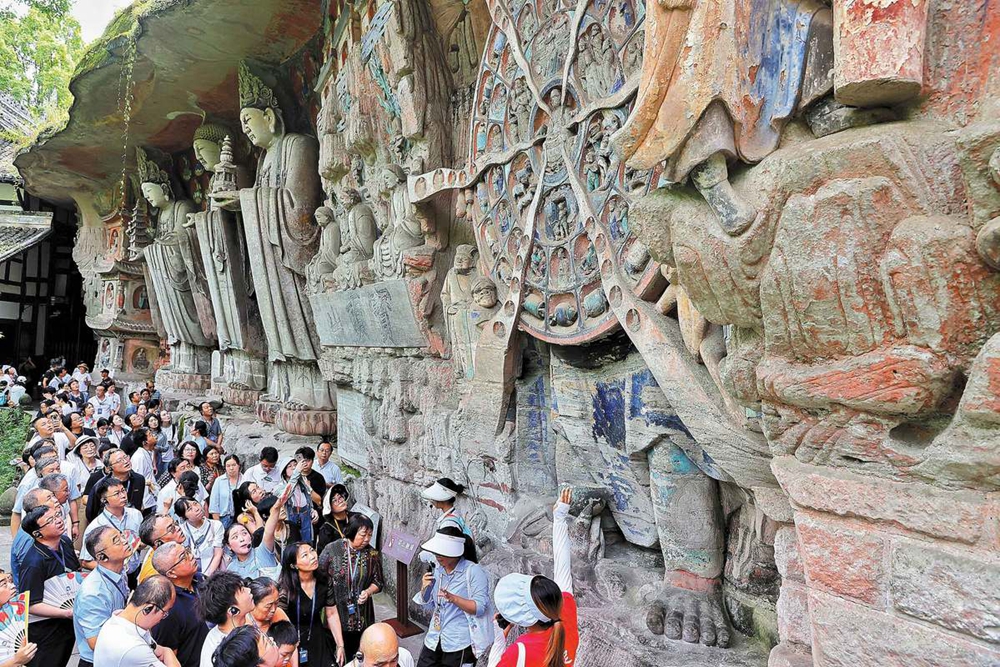Broader scope needed to protect cultural relics

Visitors appreciate rock carvings in Baodingshan, one of the five major clusters in Dazu district, Chongqing. [Photo by Jiang Dong/China Daily]
Public, social organizations urged to contribute to management, utilization
Legislators have suggested social organizations work with cultural relics protection and utilization teams while mulling revisions to a draft law, in a bid to advance the sustainable development of traditional Chinese culture.
The suggestion was forwarded after the draft amendment to the Law on the Protection of Cultural Relics was submitted to the Standing Committee of the National People's Congress, China's top legislature, on Oct 20 for first review.
While allowing academies and news outlets to enhance public awareness to protect relics, "it's also essential to add some provisions in the draft to encourage social efforts to protect and utilize cultural relics", said Fu Caixiang, a member of the NPC Standing Committee.
"China has more than 760,000 immovable cultural relics — a large number — and they're widely distributed across the country," she said. "Some are State-owned and some are under individual ownership, meaning difficulty in management and protection.
"The lack of financial resources for a few local governments and the weakness of grassroots protection have led to the collapse and disappearance of many cultural relics," she said.
The legislator called for more social organizations to participate in relics protection and utilization, suggesting the country provide subsidies for them in joint management, with rewards for those who perform better in this regard.
Tang Weijian, another member of the NPC Standing Committee, agreed with encouraging social efforts in relics protection, adding that the encouragement should be written into the draft as a principle.
"Every walk of life needs to participate in promoting the sustainable development of fine traditional Chinese cultures, so it's necessary to clarify the need in law, requiring the public to jointly protect relics and figure out their value," he said.
As some collectors are able to adequately manage and protect their relics, lawmaker Zheng Weiping suggested the country support them and set up venues for exhibitions to help more people understand the history behind the relics and realize their value.
During the discussion on the draft, several legislators pointed out that strong protection should be expanded to more fields, in addition to ancient tombs, murals, stone carvings, ancient buildings and historical works of art.
Fu said that some content concerning the research of deep-sea archaeology needed to be added to the draft, "as our country has 3 million square kilometers of sea area, where there are many deep-sea cultural relics".
Xiong Yuanming, a member of the NPC's Ethnic Affairs Committee, highlighted the significance of strengthening the protection of ancient books and documents, suggesting more specific rules for their protection, restoration and utilization in the draft.
The current Law on the Protection of Cultural Relics was enacted in 1982.
"Amending it this time is to solve new problems regarding cultural relics protection and management in the new era," Hu Heping, minister of culture and tourism, said while explaining the draft revision to national legislators.
According to the draft, punishments for those who damage cultural relics will be increased, "as we hope to crack down on destroying relics more effectively in this way", he added.
In the draft, for instance, people who start construction work without taking measures to protect immovable cultural relics, and which results in damage to the relics, will face fines of up to 1 million yuan ($137,000), adding that the maximum fine for departments or companies in such situations is expected to reach 10 million yuan.








